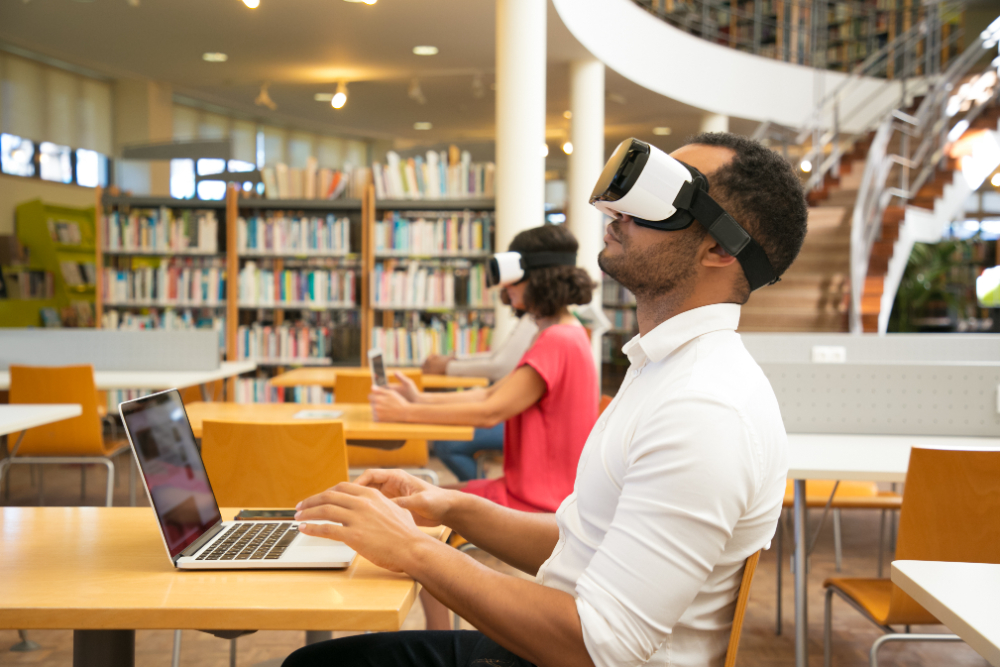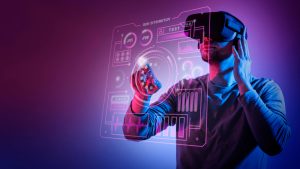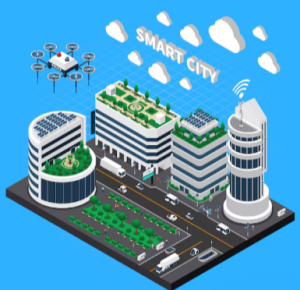The education saw a revolutionary change in the last few years, it owes that revolution to the introduction of educational technology or EdTech. Because America is a leader in the global technology society, it has excelled in creating and adopting innovative EdTech solutions. This changes the way people learn and teach and how they interact in education between students and teachers. This article tries to explore the ways America is leading in bringing edge cutting EdTech solutions, while also mentioning significant players in the industry and impacts on innovations in education.
An explosion of EdTech in America

- Technology has always played its part in education. However, the acceleration really came during the COVID-19 pandemic where it turned out millions of teachers and students depended on EdTech to keep learning remotely.
- This brought the attention of the public to how new and potentially innovative solutions will contribute to the education process.
- Now, these movements have stirred American companies and institutions into their research and development activities to build a great ecosystem-the EdTech growth category. From virtual classrooms to personalized learning platforms, America’s contributions set the whole global education industry ablaze.
Key Innovations in American EdTech
Really the Teaching with Virtual and Augmented Reality
- Virtual Reality (VR) and Augmented Reality (AR) have transitioned the classrooms into interactive learning environments.
- The companies in America like Nearpod and zSpace have already begun integrating VR and AR into their platforms to engage students into learning. Students, for example, can explore ancient civilization or dissect virtual frogs while at home.
- Well, using such constant immersion gives improved understanding, retention, and makes difficult subjects much simpler for students of all age limits.
Artificial Intelligence (AI) Personalized Learning
- AI is one of the most revolutionary discoveries of EdTech. In the US, companies like Carnegie Learning and DreamBox Learning use AI to create personalized learning experiences.
- These platforms analyze a student’s performance and tailor content to meet their specific needs.
- With AI, educators can identify struggling students early and provide targeted interventions, improving learning outcomes. It makes the teaching easy since it frees the time spent by teachers on the tedious task of doing grading and lesson planning.
Gamified learning
- Miles apart from this, gamification, such as offered by digital sites and platforms in America, has been known to motivate students in studies like Kahoot! and Quizlet that have enabled access through the introduction of games in learning.
- It is very much effective in younger learners as they turn learning sessions into fun challenges.
- Motivates students to learn, encourages teamwork in the classroom, and promotes healthy competition.
Learning Management Systems (LMS)
- Many educational institutes in the United States, from primary through secondary to high school, use LMS such as Blackboard and Canvas. They have made course management greatly efficient in the area of material and assignment sharing and tracking students.
- It has become almost synonymous with an integral part of education-both traditional and online-into making sure that every one of those involved
Accessibility and Inclusion
- For us, what really stands out is that it is also about accessibility and inclusion. Probably the best example of American EdTech would be in this part.
- Immersive Reader by Microsoft and Google Classroom are good examples already in the market. These are meant to improve accessibility for students with disabilities so that they have the same chances of access to quality education.
- Indeed, these ones provide the likes of text-to-speech, translation, or customizable interfaces to ease the process of learning into individualized needs.
Key Players in American EdTech
American industries and institutions are at the forefront of the EdTech revolution. A few of the following examples:
- Coursera: Lots of online sources of courses offered from the top universities across the world, making higher-level education available to students at home.
- Duolingo: Game-based language learning by Duolingo that makes it much more fun and probably easier to learn a new language.
Khan Academy-the nonprofit institution offers free educational resources to students, teachers, and parents, especially empowering the individual with an opportunity to access high-quality education - Edmodo: A collaborative learning community for teachers, students, and parents.
These are two organizations forming part of the creative and innovative revolution transforming the American EdTech scene.
The effect of American solutions on EdTech education
The profound impact of EdTech on education by Americans is on different levels. Innovations have opened new doors in a few other areas, including:
- Accessibility: Quality education now extends even to distant parts of the world and to those whom it may otherwise ignore. They can learn from anywhere now, best courses with resources. Most case studies done by internationally renowned researches are accessed.
- Greater Engagement: More fun through the use of VR, AR, and gamification, motivating students to learn.
- Better Teacher Support: Such tools help a teacher to plan lessons easily, grade students, and communicate with them as well as their parents.
American EdTech on a global scale, and specifically Coursera or Udemy, has millions of audience around the world, which makes them demonstrate the positive effects of such platforms.
While American EdTech is soaring high into successful height, there are several problems that come with this popularity:
- Digital Divide: Not all students are connected to the internet, or even to a device that has a well-working connection which would allow them all the functionalities and perhaps exposure provided they used EdTech.
- Privacy: Collection of these data of students leads to much of privacy and security issues and thus becomes necessary to establish rules.
- Teacher training: Proper training should give to teachers to use these Ed-Tech axes well in their lesson plans.
Nonetheless, even with all these challenges, EdTech in America has a bright tomorrow. With advances in AI, blockchain, and even the latest 5G systems, innovations are anticipated to continue soaring even higher-the increased investments into R&D would, in all likelihood, remedy the limitations these EdTech systems harbor, rendering them efficacious and accessible.
Conclusion
It indeed means a lot to be truly innovative in terms of working education systems in North America. Personalized learning with AI, gamification for learning, and virtual classrooms are only a few new words about learning and teaching.
such advances have shown that it really matters to develop education systems in North America that will work these days for the individual. Personalised learning with AI, gamification for learning, virtual classrooms, etc. are really just some of the terms redefining learning and teaching. While there still are challenges, the progress made thus far has been truly inspiring and will pave the way for better things in future education.
American EdTech will thus become a strong spokesman in the crowd when it comes to meeting the ever-growing demand for digital learning. Students, teachers, and even learners in between will find the future of learning exciting beyond compare.



